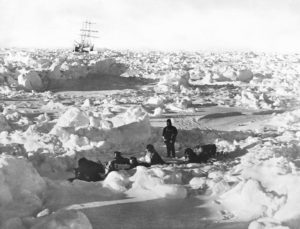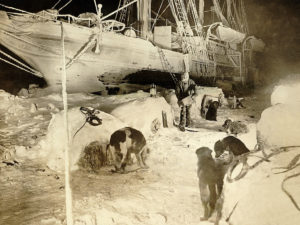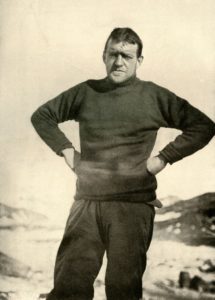-
Space and Astronomy
- Mars: Just the Beginning? – Lesson
- Mars: Just the Beginning? – Quiz
- Six Billion ‘Earth-like’ Planets in the Milky Way Galaxy? – Lesson
- Six Billion ‘Earth-like’ Planets in the Milky Way Galaxy? – Quiz
- Did NASA Scientists Find Another Universe? – Lesson
- Did NASA Scientists Find Another Universe? – Quiz
- A New Planet Was Discovered – And Old Theories Must Change – Lesson
- A New Planet Was Discovered – And Old Theories Must Change – Quiz
- SpaceX Completes First Civilian Trip to Space – Lesson
- SpaceX Completes First Civilian Trip to Space – Quiz
- First Movie Filmed in Space Successful – Lesson
- First Movie Filmed in Space Successful – Quiz
- James Webb Telescope Heads to Deep Space – Lesson
- James Webb Telescope Heads to Deep Space – Quiz
- A Lot Is Happening on and Around the Moon – Lesson
- A Lot Is Happening on and Around the Moon – Quiz
- First-Ever Picture Taken of the Milky Way’s Black Hole – Lesson
- First-Ever Picture Taken of the Milky Way’s Black Hole – Quiz
- First James Webb Telescope Images Revealed – Lesson
- First James Webb Telescope Images Revealed – Quiz
- Buzz Aldrin Sells Jacket from the Moon Landing – Lesson
- Buzz Aldrin Sells Jacket from the Moon Landing – Quiz
- Humans at Home on the Moon – Could It Really Happen in This Decade? – Lesson
- Humans at Home on the Moon – Could It Really Happen in This Decade? – Quiz
- Winter on Mars – Lesson
- Winter on Mars – Quiz
- Pictures of Mars Show Hidden Figures – Lesson
- Pictures of Mars Show Hidden Figures – Quiz
- Jupiter and Venus Appear to ‘Kiss’ – Lesson
- Jupiter and Venus Appear to ‘Kiss’ – Quiz
- The James Webb Telescope Finds Six Ancient Galaxies – Lesson
- The James Webb Telescope Finds Six Ancient Galaxies – Quiz
- Would an EpiPen Work in Space? – Lesson
- Would an EpiPen Work in Space? – Quiz
- Satellite Spots Earth’s Second Moon? – Lesson
- Satellite Spots Earth’s Second Moon? – Quiz
- Space Mining – The Race is On and China is Leading – Lesson
- Space Mining – The Race is On and China is Leading – Quiz
- How Did Gold and Platinum Arrive on Earth – Lesson
- How Did Gold and Platinum Arrive on Earth – Quiz
-
The Environment
- Red Tide: No Fun in the Florida Sun – Lesson
- Red Tide: No Fun in the Florida Sun – Quiz
- Leaded Gas Eradicated from the World, Says United Nations – Lesson
- Leaded Gas Eradicated from the World, Says United Nations – Quiz
- COVID Plastic Waste: A Big Problem for Oceans – Lesson
- COVID Plastic Waste: A Big Problem for Oceans – Quiz
-
Archaeology and Paleontology
- Ancient Human Species Discovered – Lesson
- Ancient Human Species Discovered – Quiz
- Biblical City of Sodom Found in the Jordan Valley? – Lesson
- Biblical City of Sodom Found in the Jordan Valley? – Quiz
- Antarctic Explorer’s Ship Found After a Century – Lesson
- Antarctic Explorer’s Ship Found After a Century – Quiz
- Newly Found Diary Shows How Ancient Egyptians Built the Pyramids – Lesson
- Newly Found Diary Shows How Ancient Egyptians Built the Pyramids – Quiz
- Study Shows ‘Apocalyptic Dust’ Might Have Killed the Dinosaurs – Lesson
- Study Shows ‘Apocalyptic Dust’ Might Have Killed the Dinosaurs – Quiz
-
Technology
- 3 Reasons to Protect Your Online Privacy – Lesson – VIDEO
- The Rise of Deepfakes – Lesson
- The Rise of Deepfakes – Quiz
- A New Mayflower Voyage, Captained by AI Technology – Lesson
- A New Mayflower Voyage, Captained by AI Technology – Quiz
- The Latest Supercomputer Is Breaking Speed Barriers – Lesson
- The Latest Supercomputer Is Breaking Speed Barriers – Quiz
- LNGenZ Survey: What is the Greatest American Invention? – Lesson
- LNGenZ Survey: What is the Greatest American Invention? – Quiz
- School and ChatGPT – Is it Cheating? – Lesson
- School and ChatGPT – Is it Cheating? – Quiz
- Artificial Intelligence Gets an Upgrade? – Lesson
- Artificial Intelligence Gets an Upgrade? – Quiz
- Scientists Plan to Bring the Dodo Bird Back from Extinction – Lesson
- Scientists Plan to Bring the Dodo Bird Back from Extinction – Quiz
- Is There Too Much Technology in Education? – Lesson
- Is There Too Much Technology in Education? – Quiz
- AI Coming to a Keyboard Near You – Lesson
- AI Coming to a Keyboard Near You – Quiz
-
Mind and Body
- Teen Scientist’s Invention Mixes Music with Mental Health – Lesson
- Teen Scientist’s Invention Mixes Music with Mental Health – Quiz
- Man Receives First Pig Heart Transplant – Lesson
- Man Receives First Pig Heart Transplant – Quiz
- Sniffing Out the Truth About Smells – Lesson
- Sniffing Out the Truth About Smells – Quiz
- The Power of Playtime – Lesson
- The Power of Playtime – Quiz
- Is Language Getting More Emotional? – Lesson
- Is Language Getting More Emotional? – Quiz
- Scientists Say Household Chores Help Kids’ Brains – Lesson
- Scientists Say Household Chores Help Kids’ Brains – Quiz
- Transplant of Pig Kidney Into a Human Successful So Far – Lesson
- Transplant of Pig Kidney Into a Human Successful So Far – Quiz
- The Lack of a College Degree Is Shortening Lifespans – Lesson
- The Lack of a College Degree Is Shortening Lifespans – Quiz
-
Flora and Fauna
- Dogs Can Tell When Humans Make a Mistake, Says Study – Lesson
- Dogs Can Tell When Humans Make a Mistake, Says Study – Quiz
- Jonathan: The World’s Oldest Living Tortoise – Lesson
- Jonathan: The World’s Oldest Living Tortoise – Quiz
- The Monarch Butterfly Makes a Surprise Return – Lesson
- The Monarch Butterfly Makes a Surprise Return – Quiz
- Bat Falcon Spotted in the United States for the First Time – Lesson
- Bat Falcon Spotted in United States for the First Time – Quiz
- Charles Darwin’s Notebooks Mysteriously Returned after 20 Years – Lesson
- Charles Darwin’s Notebooks Mysteriously Returned after 20 Years – Quiz
- Six Endangered Red Wolf Pups Born in Wildlife Refuge – Lesson
- Six Endangered Red Wolf Pups Born in Wildlife Refuge – Quiz
- Scientists Record Never-Before-Heard Whale Call – Lesson
- Scientists Record Never-Before Heard Whale Call – Quiz
- Underwater Meadow Gets Credit as the World’s Largest Living Plant – Lesson
- Underwater Meadow Gets Credit as the World’s Largest Living Plant – Quiz
- Scientists Trying to Bring the Tasmanian Tiger Back from Extinction – Lesson
- Scientists Trying to Bring the Tasmanian Tiger Back from Extinction – Quiz
- Jurassic Era Insect Found at Arizona Walmart – Lesson
- Jurassic Era Insect Found at Arizona Walmart – Quiz
- The Comeback of the Nearly Extinct Earless Lizard – Lesson
- The Comeback of the Nearly Extinct Earless Lizard – Quiz
- A Strange Golden Orb Found on the Ocean Floor Is Alive! – Lesson
- A Strange Golden Orb Found on the Ocean Floor Is Alive! – Quiz
- Peanut: The Pet Chicken With a World Record – Lesson
- Peanut: The Pet Chicken With a World Record – Quiz
-
Mathematics
- Metric vs. Imperial: A Weighty Debate in Britain – Lesson
- Metric vs. Imperial: A Weighty Debate in Britain – Quiz
- The Abacus is Helping Kids Master Math Skills – Lesson
- The Abacus is Helping Kids Master Math Skills – Quiz
- Retired Engineer Discovers ‘Einstein’ Shape – Lesson
- Retired Engineer Discovers ‘Einstein’ Shape – Quiz
Antarctic Explorer’s Ship Found After a Century – Lesson

The Endurance, caught in the ice of the Weddell Sea, Antarctica, 1915. In the foreground is one of the expedition members out with a dog sled team on a food foraging expedition. (Photo by Underwood Archives/Getty Images)
The Endurance was found after 107 years mostly intact.
Shipwrecks and sunken treasure – the stuff dreams are made of. The quest to find a ship that was lost at sea hundreds of years ago with the promise of gold and trinkets has lured many a treasure-seeker to spend their lives hunting. The goal isn’t always treasure, though. Sometimes it’s about discovering what happened to the ship and crewmembers. Such is the case with the Endurance – a ship that sank 107 years ago and was just recently discovered.
In November 1915, the Endurance was part of Sir Ernest Shackleton’s Trans-Antarctic Expedition. The mission was to make the first land crossing of Antarctica. However, the Endurance ran into some sea-ice and sank in the Weddell Sea, part of the Antarctic coastline. The ship’s crew had to make a daring and dangerous escape using small boats, and some even on foot.
The Search for Endurance
The search for the Endurance was not easy since the Weddell Sea is covered in thick sea-ice, the type that punctured the ship and caused it to sink in the first place. However, for the first time since the 1970s (when satellite recording of the area began), the Antarctic had a low amount of sea-ice, making it easier to dig through.

The Endurance (Photo by George Rinhart/Corbis via Getty Images)
The research crew was extremely pleased and excited when they found the shipwreck because the Endurance was in remarkably good condition. “Without any exaggeration this is the finest wooden shipwreck I have ever seen – by far,” Mensun Bound, a marine archaeologist with the expedition, said. The Falklands Maritime Heritage Trust headed the discovery quest and used a South African icebreaker called Agulhas II, which had remote-operated submersibles.
In fact, the ship was in such good shape it looked much like it had when it was photographed the last time in 1915. Of course, there is some damage. The rigging is tangled and the masts are down, but the hull for the most part survived. There is also damage at the bow where it is suspected the ship struck the seabed when it sank. The anchors are still in place, and the research crew also saw some crockery and boots. Because it is considered a historical site, the contents of the ship were not brought to shore.
Bound described the condition of the ship:
“You can even see the ship’s name – E N D U R A N C E – arced across the stern directly below the taffrail (a handrail near the stern). And beneath, as bold as brass, is Polaris, the five-pointed star, after which the ship was originally named. I tell you, you would have to be made of stone not to feel a bit squishy at the sight of that star and the name above.”
Bound also said a porthole that is Shackleton’s cabin was visible too. “At that moment, you really do feel the breath of the great man upon the back of your neck,” he added.

Ernest Shackleton (Photo by Print Collector/Getty Images)
Although the ship and its treasures can not yet be brought above water, there is still a lot of work to be done. The research team will likely spend months cataloging their find.
Who Was Shackleton?
Sir Ernest Henry Shackleton was an English/Irish explorer, and one of the first to try exploring Antarctica. He was part of three British expeditions to the ice continent. The first was the Discovery expedition (1901-1904), and then he led the Nimrod expedition (1907-1909). During Nimrod, Shackleton and a sled team trekked toward the South Pole and got closer than anyone had before (though it was Norwegian Roald Amundsen who soon after became the first person to successfully reach the South Pole). Upon his return to Britain, Shackleton was knighted for his contribution to exploration.
In 1914, he and his crew set off on the ship Endurance with a mission to cross the continent of Antarctica from coast to coast, passing through the South Pole on the way. The expedition failed when the ship sank, but it wasn’t the last time Shackleton took a trip to the icy south. In 1921, he embarked on the Quest expedition to circumnavigate Antarctica, but after problems with the ship he was forced to turn back, and died of a heart attack while moored on the island of South Georgia in the south Atlantic Ocean.